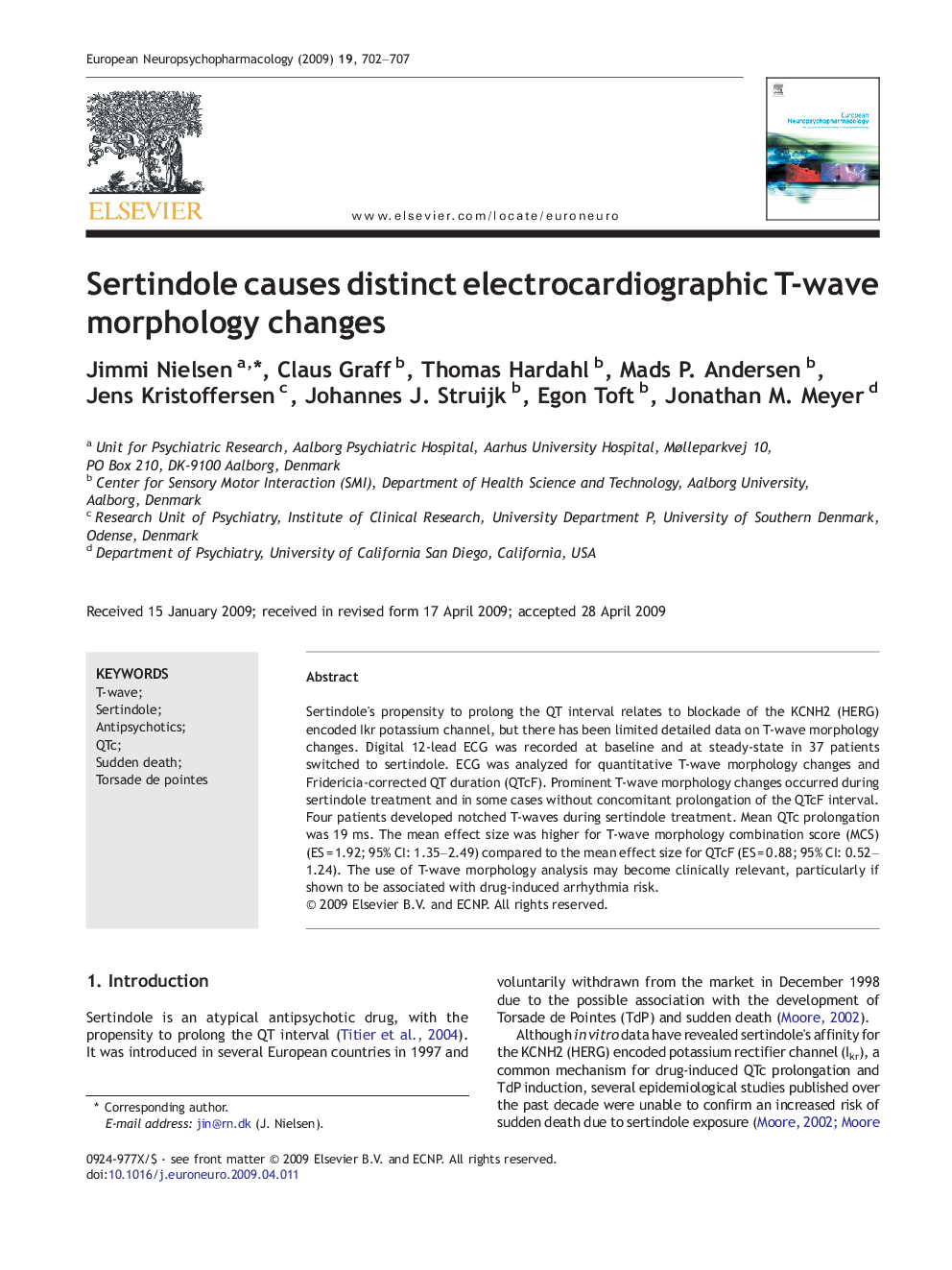| Article ID | Journal | Published Year | Pages | File Type |
|---|---|---|---|---|
| 319008 | European Neuropsychopharmacology | 2009 | 6 Pages |
Sertindole's propensity to prolong the QT interval relates to blockade of the KCNH2 (HERG) encoded Ikr potassium channel, but there has been limited detailed data on T-wave morphology changes. Digital 12-lead ECG was recorded at baseline and at steady-state in 37 patients switched to sertindole. ECG was analyzed for quantitative T-wave morphology changes and Fridericia-corrected QT duration (QTcF). Prominent T-wave morphology changes occurred during sertindole treatment and in some cases without concomitant prolongation of the QTcF interval. Four patients developed notched T-waves during sertindole treatment. Mean QTc prolongation was 19 ms. The mean effect size was higher for T-wave morphology combination score (MCS) (ES = 1.92; 95% CI: 1.35–2.49) compared to the mean effect size for QTcF (ES = 0.88; 95% CI: 0.52–1.24). The use of T-wave morphology analysis may become clinically relevant, particularly if shown to be associated with drug-induced arrhythmia risk.
